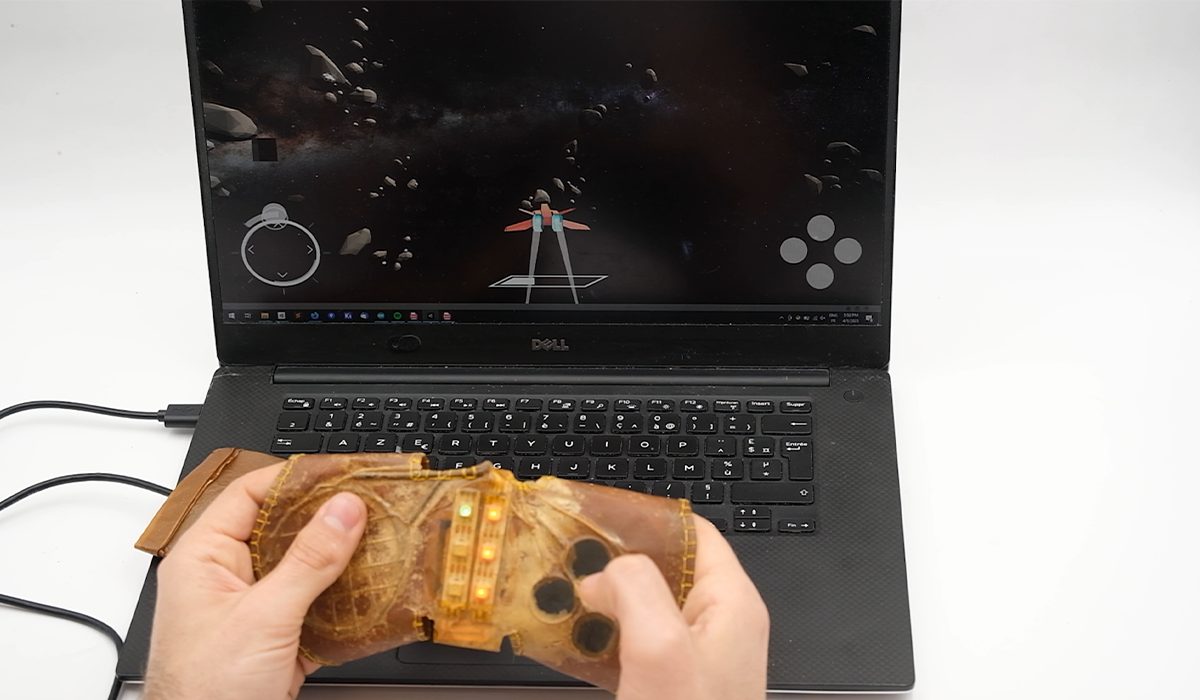Ph.D. Student Madalina Nicolae and Marc Teyssier, Principal Investigator & Creative Technologist at De Vinci Higher Education’s Institute for Future Technologies, presented their latest research work linking design, biology, and computer science entitled Biohybrid Devices: Prototyping Interactive Devices with Growable Materials.
They received a Best Demo Honorable Mention award for this research work at the ACM Symposium on User Interface Software and Technology (UIST) 2024, the premier forum for innovations in human-computer interfaces. The presentation took place at one of the most influential international conferences in the field of human-computer interaction (UIST).
Researchers Vivien Roussel, Marion Koelle, Samuel Huron, and Jürgen Steimle also collaborated on this work.
Read the interview published at ACM SIGCHI
A project nourished by science fiction and the unknown passion
In their work, they tackle this somewhat science-fiction question: What if, in the future, we could grow devices or objects instead of assembling them? What would they look like, and how does the design process change?
Living biomaterials are increasingly used in HCI for fabricating objects by growing. However, how to integrate electronics to make these objects interactive still needs to be clarified.
Their work explores the fabrication design space of Biohybrid Interactive Devices, a class of interactive devices fabricated by merging electronic components and living organisms.
From the exploration of this space using bacterial cellulose, the researchers outline a fabrication framework centered on the biomaterials’ life cycle and introduce a set of novel fabrication techniques for embedding conductive elements, sensors, and output components through biological (e.g., bio-fabrication and bio-assembling) and digital processes.
They demonstrate the combinatory aspect of the framework by realizing three tangible, wearable, and shape-changing interfaces. Finally, they discuss the sustainability of their approach, its limitations, and the implications for bio-hybrid systems in HCI.
Shape-changing shoulder accessory made out of bacterial cellulose
The future of manufacturing and product design
Other than building sustainable devices using organic biodegradable materials, as in their work on Interactive Bioplastics, this project explores the opportunities offered by life itself.
For example, many industrials and designers cultivate bacterial cellulose as a form of vegan leather. However, bacterial cellulose becomes “vegan leather” only after all the living organisms have been eliminated and killed. At some point in time, this material was alive; it was growing, evolving and responding to its environment. But we only use it after it loses its essence, which is being alive.
This approach must reconsider the unique aspects and opportunities offered by these materials and how they can be leveraged beyond classic product design.
At the DeVinci Research Center, Madalina and Marc Tessier are accustomed to creating uncanny devices, such as smartphones with synthetic skin, eye webcams, or robotic fingers. Their approach utilizes critical and speculative design to propose visions of what the future of technology could be like.
While critiquing is a valuable exercise, as researchers, they aim to propose feasible alternatives. The production of these devices requires oil-based (plastic) materials for the casing, and the electronic components are manufactured using raw materials extracted from the Earth.
Madalina’s line of research explores the possibility of electronics being fully bio-based and even biodegradable. Their approach lies at the intersection of Human-Computer Interaction, Digital Fabrication, and Material Science.







